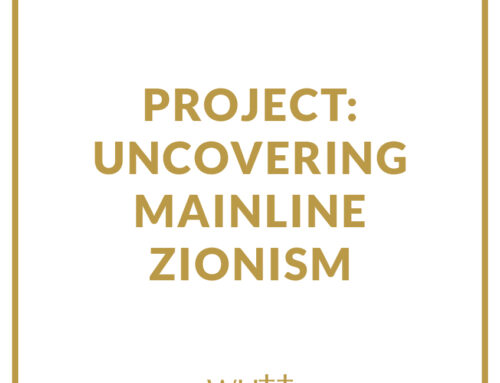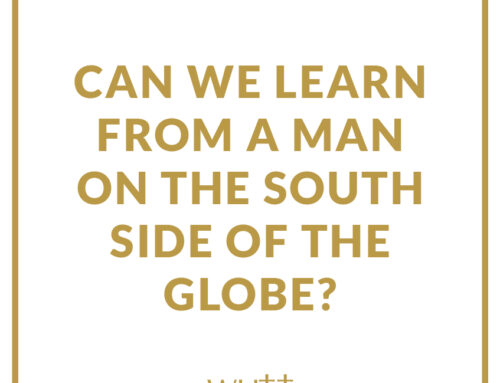Should gold be $1500 per ounce or worth about the same as peanut butter? You will find both views in any room full of investment advisors. If you were to ask your local bank VP to explain the relationship between gold and the dollar, you could expect a long and confusing answer, ending with something like this: “Nobody knows what will happen in the final analysis.” Your banker’s MBA degree does not equip him to understand anything as basic as what makes gold and the dollar go up and down.
One fact is not in doubt, the trend is up and the momentum is on the side of gold going higher then the present $630 an ounce, more then double the low of three years ago. Price wise it has paralleling the rise in oil prices and a host of base commodities, including copper and zinc, and of course, oil.
The big usury-bankers, internationalists with license to print diluted money out of thin air, hold the key to gold prices. These shadowy career executives run the world’s most powerful privately owned bank called Federal Reserve System. With its clone anti-banks in other world financial centers, it controls the value of money. These never publicized titans understand gold and they somehow control the biggest hoard of gold in the world in a deep subbasement below the fortress like FED in lower
What do serial wars have to do with gold and the dollar?
What does the Federal Reserve System (FED) do?
Why doesn’t CNN or 60 Minutes explain this?
Who owns the huge reserve of gold stored in the sub basement of the Federal Reserve Bank of
Who really controls the FEF?
Part I of GOLD: A Rediscovered Investment, first printed on
Gold is up 50% in those months and inflationary loss of buying power and general fears about all kinds of violence are among the ‘gut feel’ elements that have awakened the slumbering interest in gold ownership.
But there is also a more basic reason. Recent low world interest rates favor gold investment. According to the Gold Anti‑Trust Action Committee (GATA ) and other King Midas investors are believed to have soaked up as much as half of the known world’s supply accumulated over 5000 years of mining.
Among the new huge accumulators of gold are the billion Chinese who are becoming consumers and savvy savers. Several veteran gold experts, who claim to study the figures from morning till night, state that hoarders are fast overrunning the historical supply. WHTT is inclined to believe them for two good reasons: low interest rates (still historically and arificially low) make gold purchases appear logical and the cost of serial wars makes it all too obvious that the dollar is being destroyed by dilution in front of our eyes.
The figures for gold sales by central banks–the world’s largest holders–are well-hidden by these huge hoarders and impossible to verify, because the hoarders are not obliged to tell anyone more than they choose. Determining who owns the supply of gold accumulated over 5000 years of history is not the precise science some tell us it is. Americans can only guess if there is any gold in
There are natural gold consumers who buy as a method of savings because they have no other choice.
My Arab friend took me to the gold market in
One of the gold buyers was a well-dressed young Arab businessman in a western suit and tie. His wife wore traditional Muslim attire, covering all but her face. They sat next to me in the small stall where the gold trader kept his inventory on hooks in a little bay window off his cubicle that was just large enough that his right arm could reach all of its corners. There was just room for four of us to sit on the L-shaped wooden bench. I waited while he did business.
The parties negotiate quietly for a few minutes, the buyer discussing the several handcrafted bracelets with his wife. He quietly settled on three bracelets, each about a half ounce, which he paid for with thousand Shekel notes.
The young Arab businessman slipped the purchased bracelets onto the arm of his lady where they disappeared under the black sleeve of her garment. They departed, having converted fast-decaying and hated Shekels to wealth that they could carry and that would not decay. The lady looked pleased; there is not much wealth in Gaza, and the family’s savings account on her arm is safe against dilution; it is portable wealth that requires no banker and ‘moths cannot eat’ it.
A steady stream of buyers moved through the
The Gaza Arab has real problems. He might have to leave his home or see it destroyed at a moments notice. He is subject to search, and his house could be bulldozed with no recourse available to him. His bank could be blown to bits by a missile. But even if none of these things happen, he knows the Israeli currency loses 20% or more of its value every year. He is a natural gold buyer.
What about those who live in safe and war free countries’ with savings accounts returning two percent per year or less, some savers have figured out it is logical to accumulate gold in place of bank deposits, T‑bills or CDs. While gold yields zero, anyone can see there is an upward trend, while savings accounts yield so little that the sacrifice in income is nominal. A teenager buying cokes can tell you that dilution is many times more than 1% a year; regardless of what the government tells us about stable prices, most know otherwise.
During much of the 1980s the income sacrifice to own gold was 5‑10% per year or more. In other words, you had to forgo 10% of annual income to own gold. This may be the cheapest time in American history to convert savings to gold. It also may be the period of highest dilution prospects in recorded history. As long as interest on savings remains low and inflation is present, gold makes perfect sense. Citizens around the troubled world know this and are buying. Americans are still beguiled by what their stockbroker tells them.
The dilution loss (commonly known as inflation) in the
The current gold price is 100% above its lows of three years ago, but still well below 1984 high water mark of $840.00 plus per ounce. Gold reached these heights at an illogical time when interest rates were at strangulation levels in the
Today economic conditions are very much the reverse of the 1980s. Central banks are printing money in unheard of quantities to finance the American Empire’s serial war policy. Frightened and savvy investors see through the war scam and realize how much it costs; gold was rediscovered as an investment when the stock market turned lower at the turn of the 21st century. The fundamental reasons for a gold rise are present and the upward trend is apparent. Our purpose is not to predict gold prices, but to explain the dynamics of the market and urge Americans to take the falling dollar market in dead earnest. Gold rise is no fluke. it goes hand in glove with massive dilution.
CONCLUSION
The young businessman in
Part II, explains how the Federal Reserve Bank dilutes money and why. Dollar Dilution And The Golden Speedometer
Charles E. Carlson
Books that help explain dilution and gold, all found at:
The Law: by Fredrick Bastiat, acclaimed as a primer on dilution (inflation) for more than a century, author exposes all too familiar patterns that we can see in our own society, and provides a clear pattern to understanding the cause and effect of monetary dilution.
Tragedy & Hope: A History of The World in Our Time by Georgetown and Harvard Professor Carroll Quigley, a 1350-page history of The Council on Foreign Relations, the Federal Reserve and more. This is a study of world financial powers by an author who considered himself on the inside. Former President Bill Clinton referred to Professor Carroll Quigley as his most influential college professor. Quigley claims to be the unofficial biographer for the establishment.
On Nation Under Israel, orgionally titled Holocaust II? Saving
ESSENTIAL TO UNDERSTANDING THE ROOT OF THE MIDDLE EAST MESS. AND UNTIL
SUPPLIES RUN OUT, IT IS FREE! PLUS SHIPPING OF COURSE.


